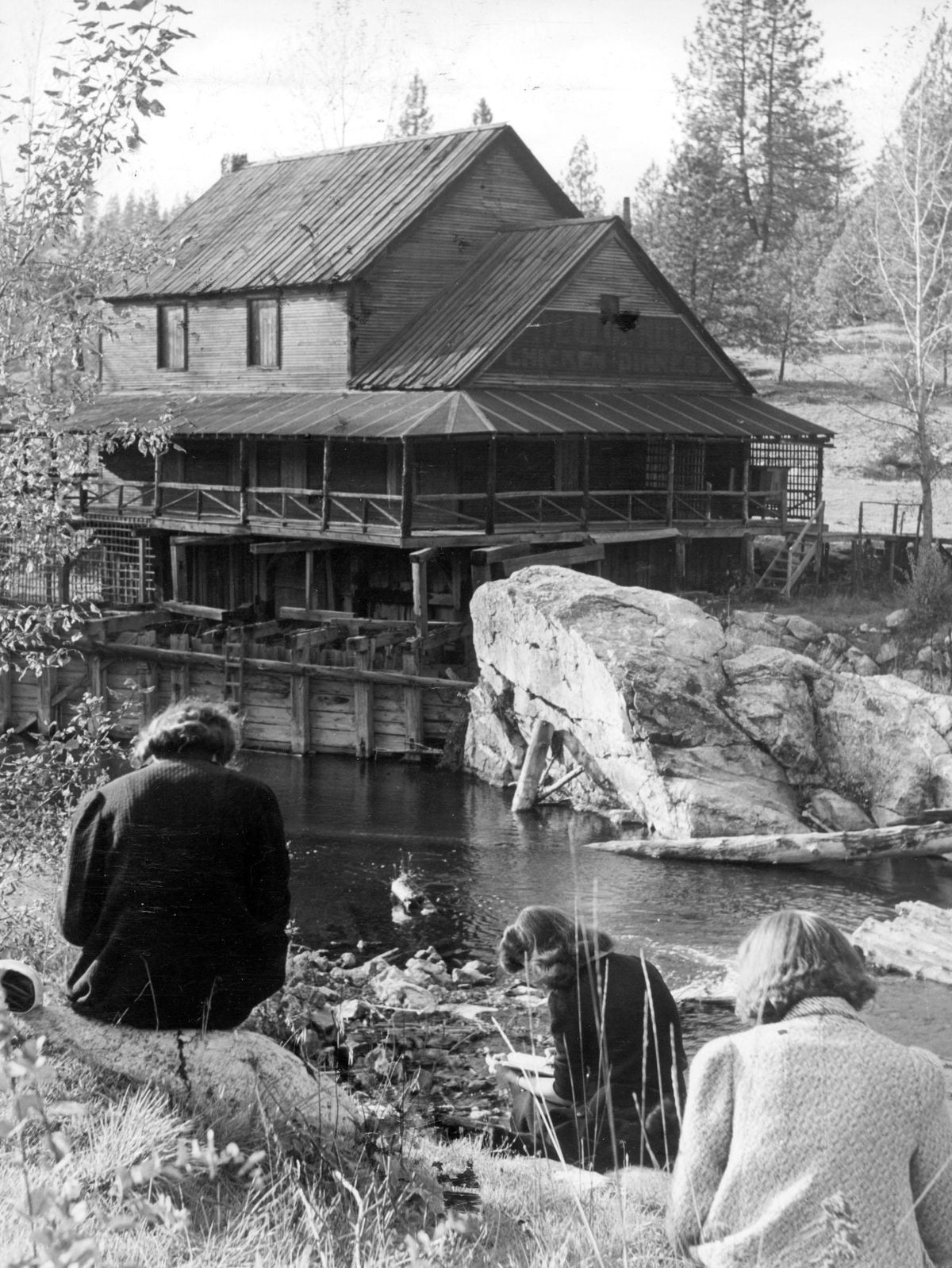Landmarks: Remnants of historic flour mill now part of Camp Dart-Lo

When Lafayette Dart walked to Spokane Falls from Walla Walla in 1879, he met up with his brother Herb, who had preceded him, and the two went to work at the Frederick Post flour mill in the young city. Before long the enterprising pair built their own mill on the north bank of Little Spokane River, just a half-mile downstream from what is now the Wandemere Golf Course on the far north side of Spokane.
All that’s left today of their thriving enterprise there are remnants of an overgrown and moss-covered wall and parts of its foundation, with a large spike protruding from one section. The remains are hidden among shrubs and brambles and stand as a fading reminder of the industry that marked the beginning days of what would become the little community named Dartford.
The Dart brothers also built a sawmill in the area and, in time, a service station. Other businesses followed, intermixed with homes, and thus a community was born.
The Darts remained involved in business and community activities in Spokane and the region their entire lives, though they did miss one big event. In a newspaper story in 1941 Lafayette Dart, then 90 years old, recalled that in 1889 he and Herb had been hired to construct a cable-powered flour mill at Post Falls in Idaho. They only learned of the great fire that consumed downtown Spokane when some millwrights who had gone back to Spokane for the weekend, returned to let them know that the town had burned the night before and was still on fire.
The mill along the Little Spokane was a prosperous endeavor for many years, but times changed and it ceased operation in 1922. One newspaper account mentions that it was used as “a chicken dinner roadside spot” for a while afterward, but mostly it became a popular attraction for amateur photographers and artists.
As the structure continued to deteriorate, it was finally declared unsafe and demolished in 1943. But as the life of the mill was ending, new life and new uses for the property had already begun to spring up.
In 1931 Kiwanis purchased the 77-acre parcel of land, a portion of which included the old Dartford mill, and there the Kiwanis Health Center was developed.
Youth groups such as the YMCA, Boy Scouts, Girl Scouts and Camp Fire began using the land for special events and ceremonies. Camp Fire leased 10 acres in 1945 to operate its first day camp, Camp Dart-Lo. The YMCA operated another section of the site, on which it constructed a swimming pool, and another enterprise operated a riding arena on the property. In 1953 Camp Fire signed a five-year lease for 40 acres and began building additional structures and developing programs for its summer Dart-Lo day camp.
By 1976 Kiwanis sold the YMCA-operated section to the Christian Life Church, and in the 1980s Camp Dart-Lo grew to 50 acres, which included the pool area as well. And in 2000 Kiwanis generously deeded the land over to Camp Fire, according to Jill Strom, director of fund development and communications at Camp Fire.
Kiwanis has remained an active community partner with Camp Fire and continues to support it with financial gifts, as have other organizations and individuals, that have helped develop the site, Strom noted. Camp Fire added a swimming pool complex in 2001. Over the years new structures were built or upgraded, and now changes are being made with an eye toward being able to use the camp year-round, Strom said.
Camp Fire’s original nonwinterized lodge was built in 1947, heated by wood stove, and with a restroom located in a building 75 feet away.
“We’ve been involved in a two-phase construction project, the first one to be completed by July, in which we’re expanding the building to the south and adding two handicap-access ramps, a new kitchen with commercial dishwasher and a new crafts room,” Strom said. And bathrooms.
The second phase, to be completed on the north side by summer 2018, will include a new staff and reception area and health room.
For the boys and girls who attend day camp, the whole idea is to leave electronic devices at home and spend time in the woods “to do those traditional things kids do at camp, playing outdoors and finding their spark,” Strom said.
And as the kids do their archery, arts and crafts, swim and gather around campfires under open-air shelters, they can perhaps also adventure along a primitive trail along the north bank of the Little Spokane River … and come across a small old moss-covered wall with a big spike in it. They might even wonder what it is and ask someone about it.